It’s been a bumpy road for the three latest additions to the handheld console scene, but after a batch of bad batteries pushed its release to 2022, the quirky Playdate is finally here. Mixing a modern and retro aesthetic, this handheld with a crank isn’t for every gamer, but it has a lot of potential. I’m excited to see what game developers do with the unique hardware that shows the value in prioritising fun and unique experiences over having the beefiest specs.
But first, an admission: I hate gimmicky devices, especially game consoles. There’s really only one company that does gimmicks well, and that’s Nintendo. But even while it’s had runaway successes with the motion-controlled Wii and the portable Switch, it’s also had spectacular failures like the Virtual Boy. When Panic first revealed the Playdate with its monochromatic screen and pop-out crank, I hated everything about it. It seemed like it leaned far too heavy on its quirky aesthetic. Having very much enjoyed Panic’s Untitled Goose Game, and being a longtime fan of Teenage Engineering’s design chops, I’ve since warmed up to the Playdate, and now having spent a few weeks with it, I can see its fun potential, but I also have some serious concerns with its design.
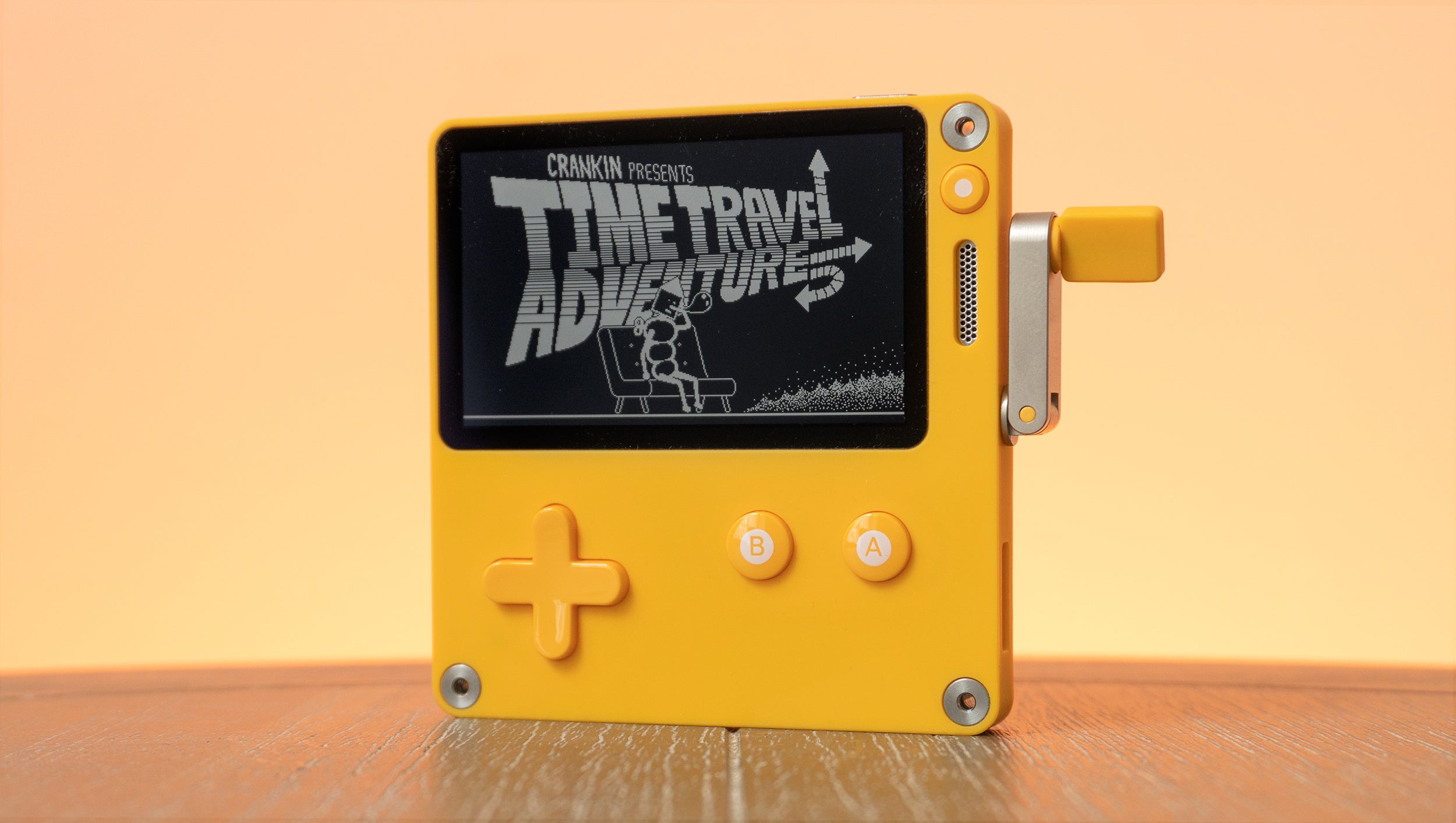
Panic Playdate
WHAT IS IT
A handheld gaming console with a black and white screen, a pop-out crank, and a subscription service that delivers two new games every week–24 in total for the first season.
PRICE
$US179 ($248)
LIKE
The crank offers some genuinely unique gameplay opportunities, with many games taking advantage of it.
DISLIKE
The monochromatic screen lacks any lighting and requires players to have to constantly re-adjust their viewing angle just to see it.
Cheery Hardware That Feels Fun and New
It’s not easy to innovate when it comes to handheld gaming. The vertical design of the original Nintendo Game Boy and the horizontal design of the Game Boy Advance have defined the look of handhelds for decades, and while that’s a good thing given both were solid devices, it’s still nice to see companies like Panic and Teenage Engineering trying something new.
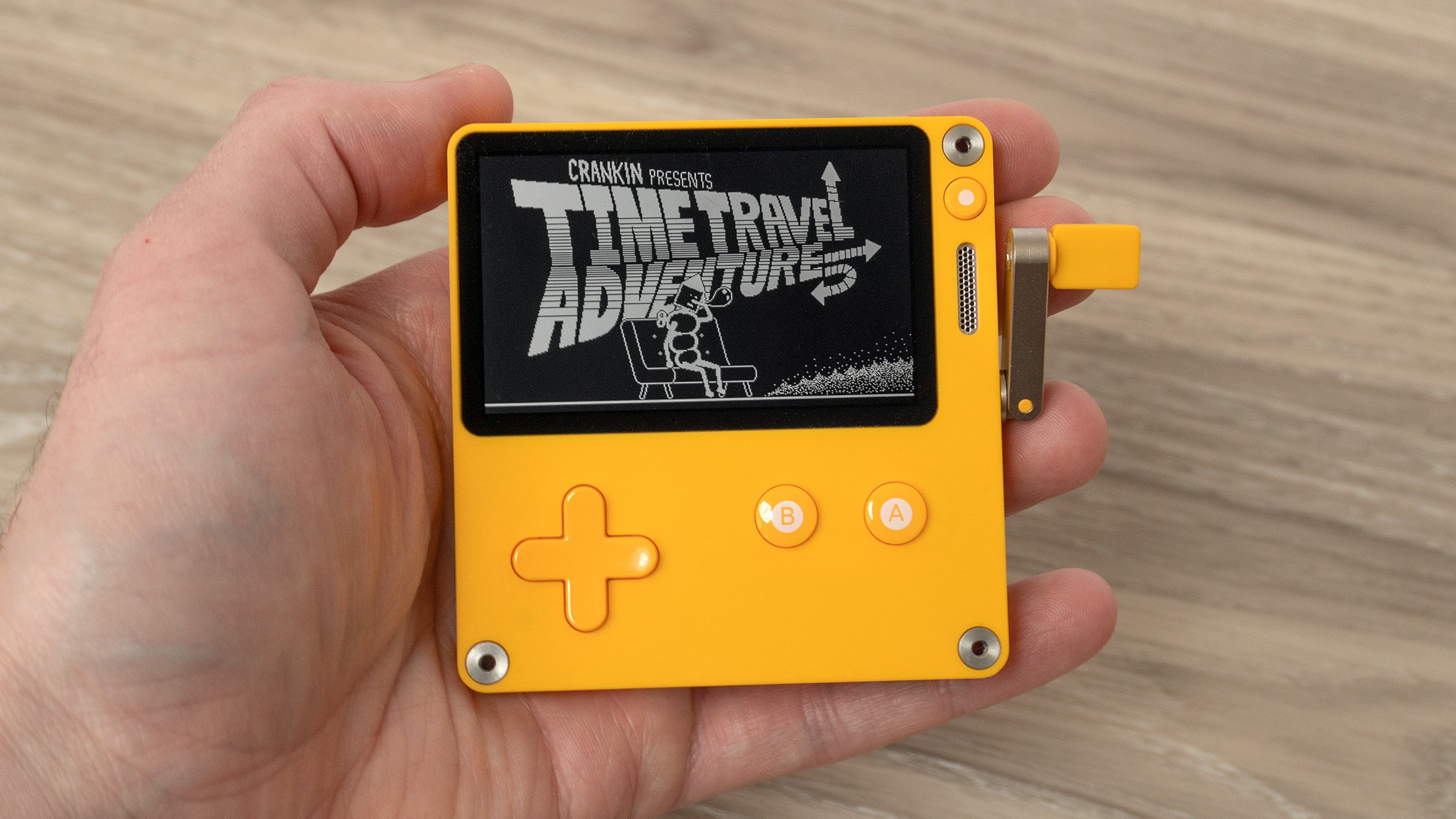
My first impression of the Playdate was that it was very yellow and cheery, and a lot smaller and lighter than I thought it would be — all good things.
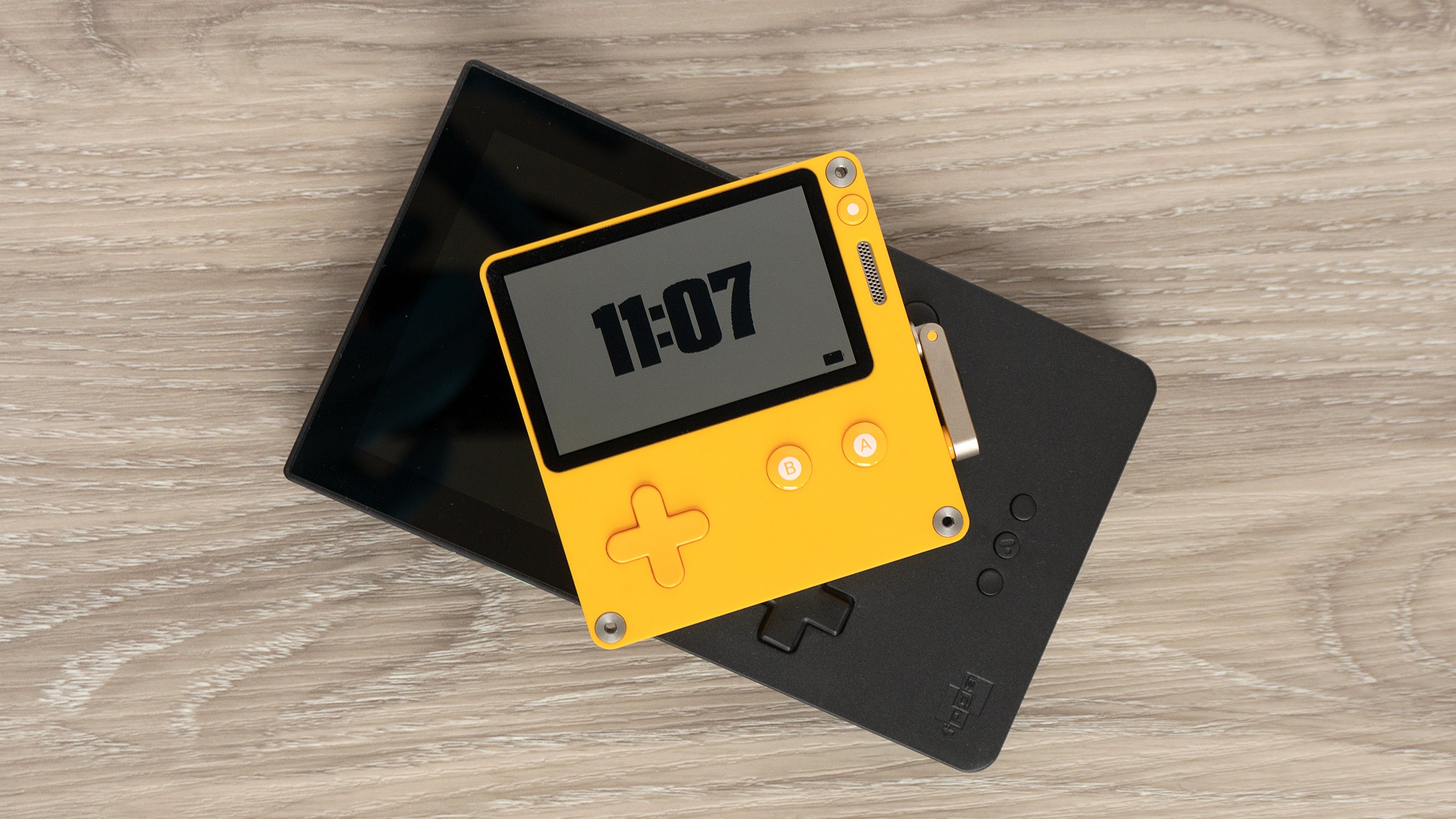
In a time when smartphones and handheld consoles continue to get larger and larger, I love how compact, thin, and lightweight the Playdate is. It’s a mostly plastic affair, but the handheld feels incredibly solid and durable. I’m always overly cautious with my smartphone, but the Playdate feels like it can take a beating and keep going, and while it will probably end up getting a few scratches, I’m ok with that.
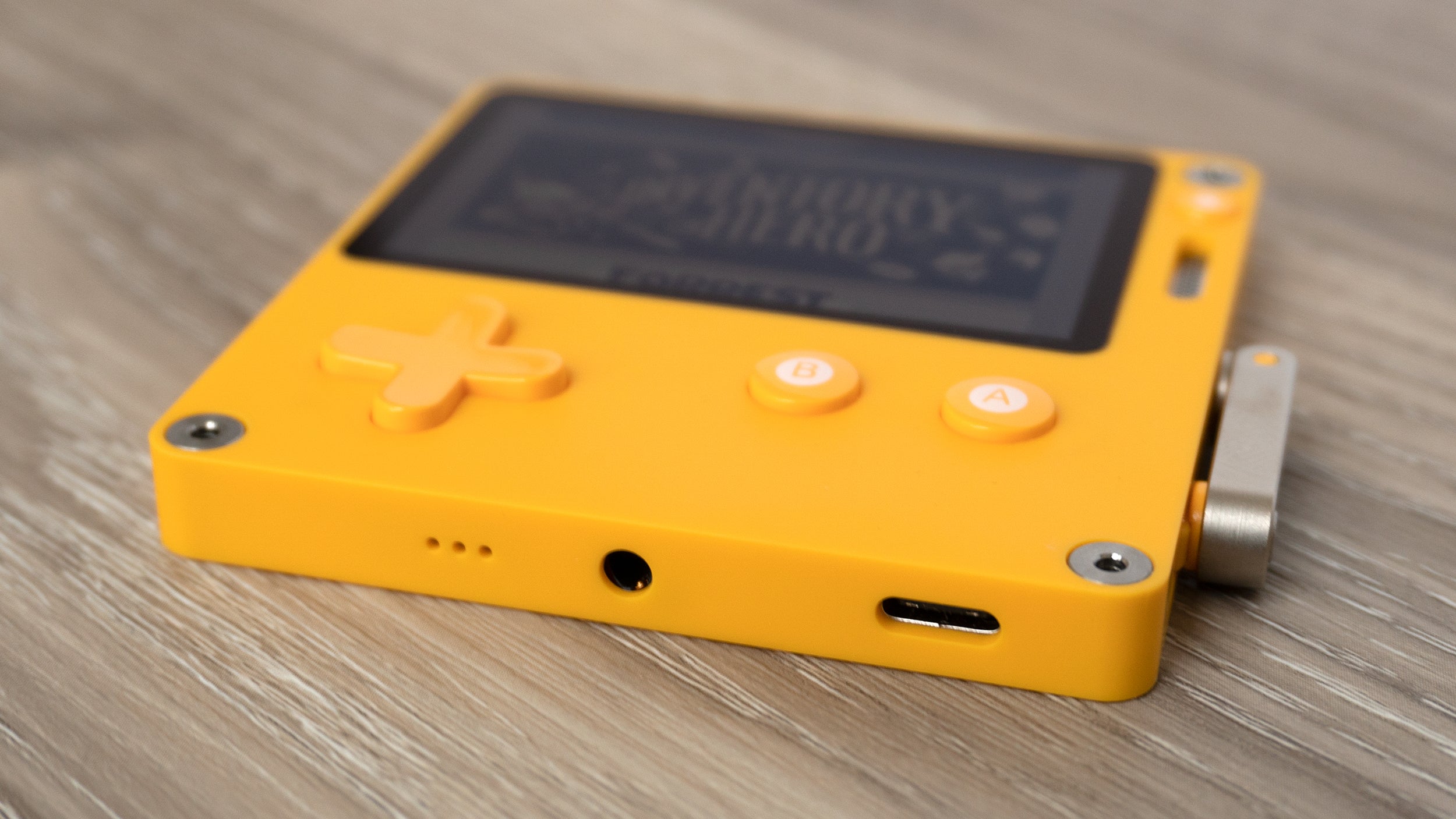
The Playdate keeps the dedicated headphone jack dream alive, which you’ll find on the underside of the console (where it should be!) next to a USB-C port for charging and syncing. Opposite these ports, you’ll also find a power/lock button on the top of the Playdate with an LED that flashes when new games arrive, but as I unfortunately discovered in the middle of the night, it’s very bright and can’t be deactivated in the settings.
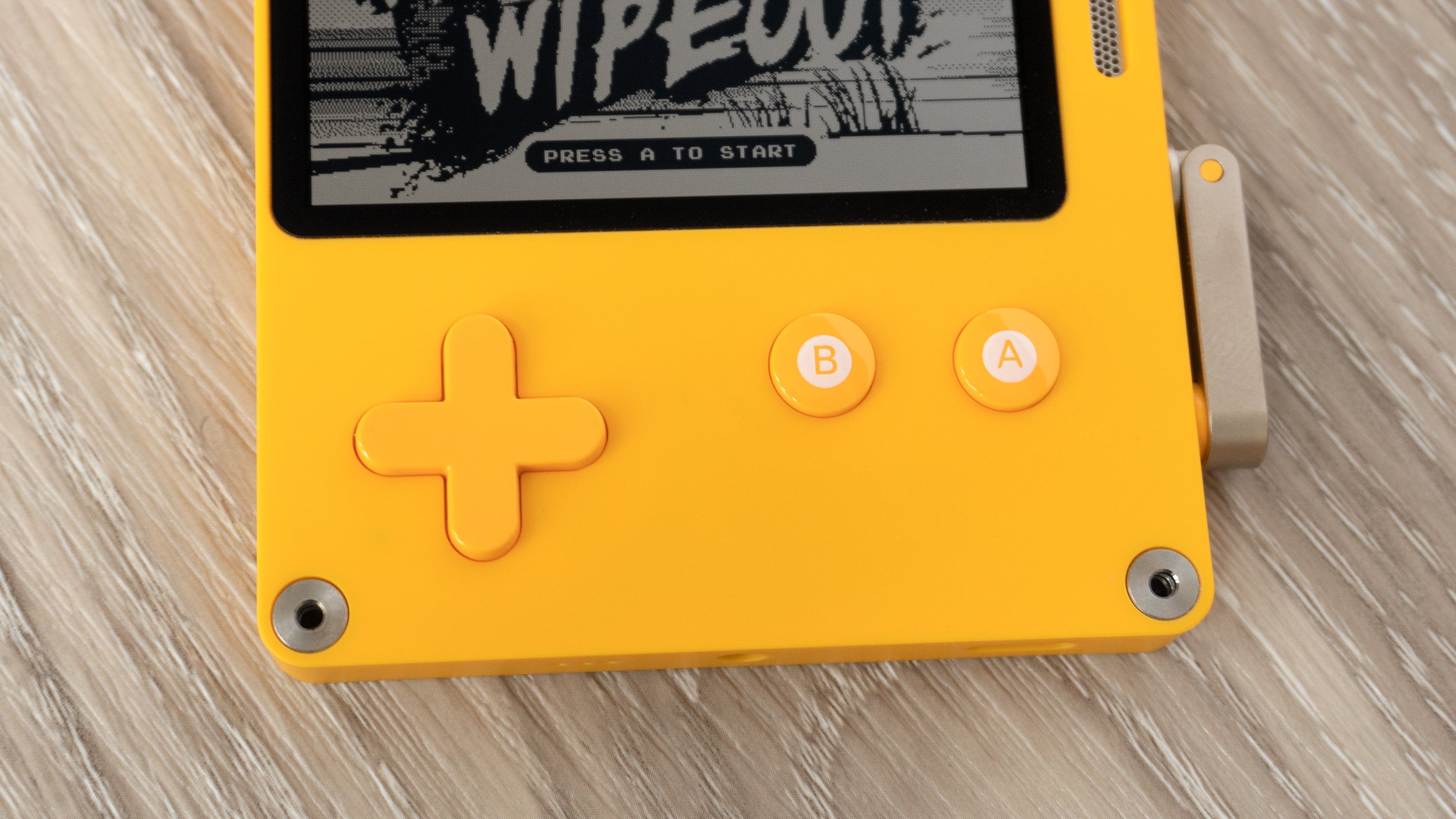
On the front of the Playdate, you’ll find a standard set of handheld game controls with a four-way directional pad and a pair of action buttons reminiscent of the Nintendo Game Boy and the company’s even older Game & Watch devices. Does the D-pad feel as good as a Nintendo one? Well, it’s a little too clicky for my tastes, but it’s more than adequate for the types of casual games Panic is targeting for the Playdate. In other words, don’t expect to see button mashers like Street Fighter showing up on this console.
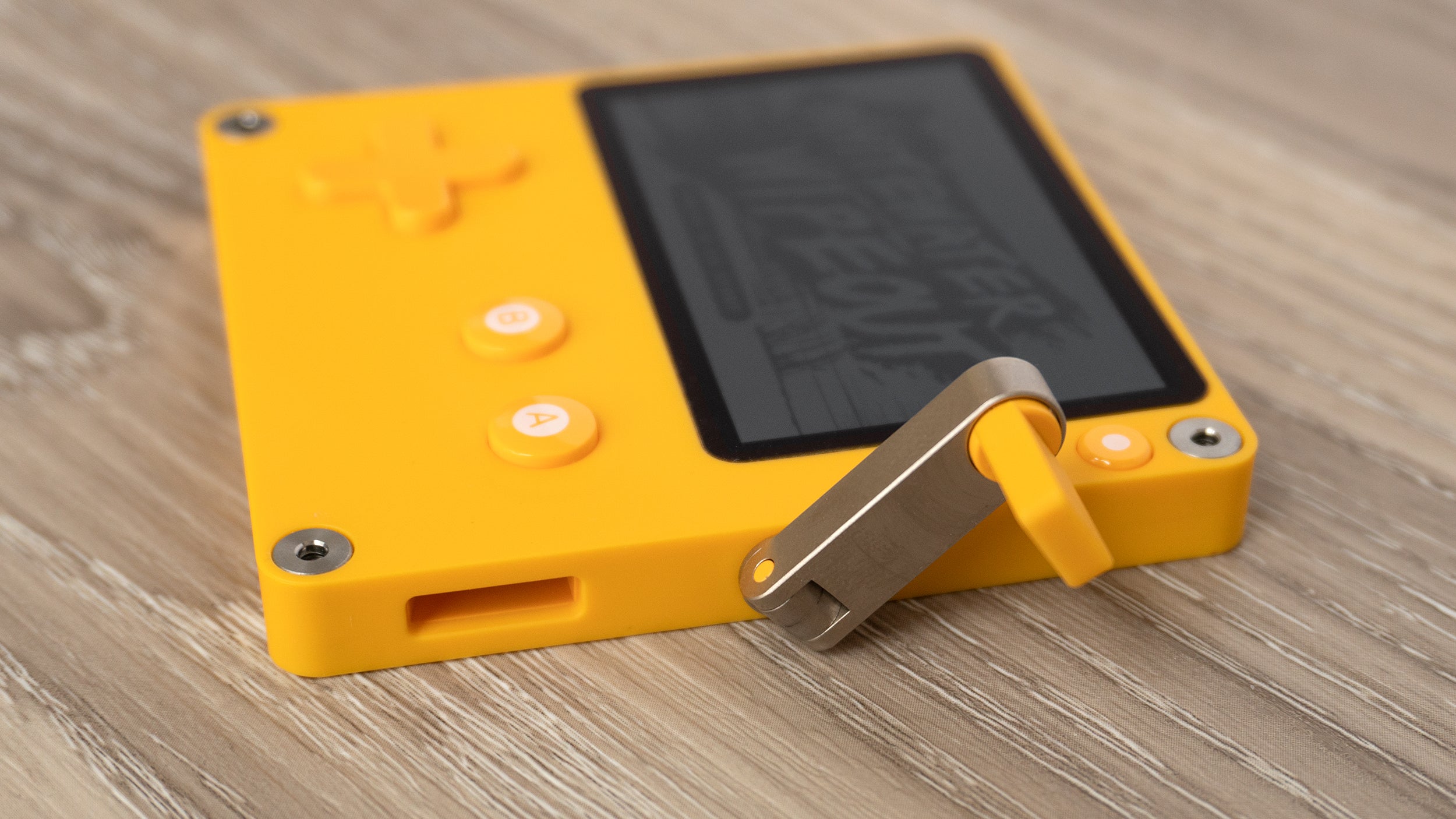
The Playdate’s most notable and unique feature is a pop-out crank on the side made of metal. It’s got a strong hinge that feels like it can take a real beating, indicating how much use Panic plans for you to get out of it, and enough resistance to feel like an accurate input device. It’s nothing like the myriad of cheap fishing reel controller accessories that popped up for the Wii years ago, and it’s clear that Panic and Teenage Engineering put a lot of thought into its design and execution as the Playdate’s star attraction.
It’s a key part of many of the games available for the handheld, but it can also be used to navigate part of its user interface, and while it’s large enough to be genuinely useful for gameplay, it’s also small enough to unobtrusively fold away against the side of the console when not in use.
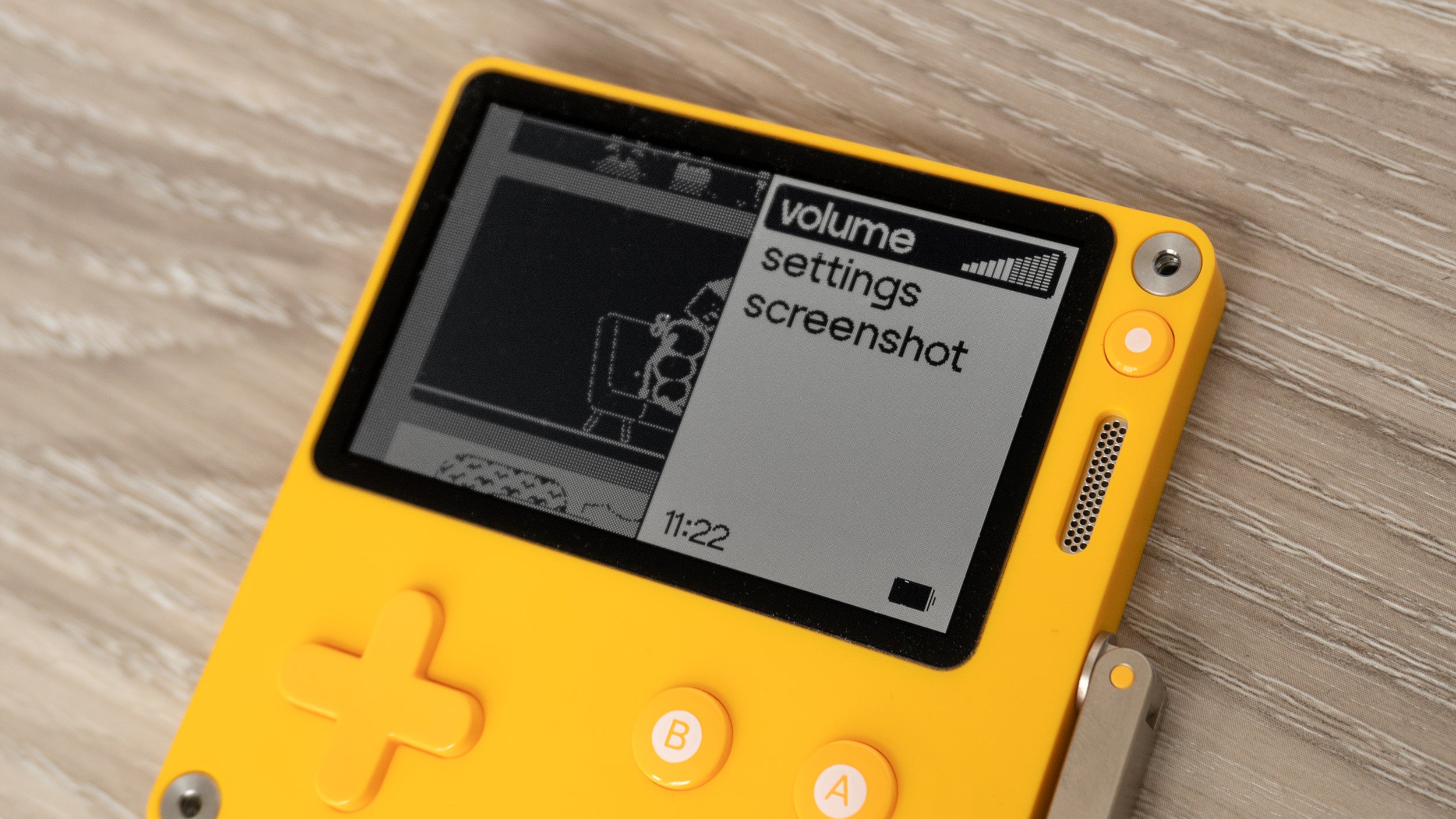
The Playdate lacks any dedicated volume controls, which I did find odd, but next to the screen above an adequately loud but tiny speaker is a menu button that can be accessed at any time with access to the home screen, console settings, options for the game you’re currently playing, screenshots, and a volume slider. You can also press this menu button while pressing up and down on the D-pad to make quick volume adjustments, although the D-pad’s movements are still registered if you’re in the middle of playing a game, which limits the shortcut’s usefulness.
As cute as the Playdate is, its body is also very solid hardware that creates an excellent platform for games. The screen, sadly, is a more glaring issue, which we’ll discuss later on.
A Solid Starting Lineup of Games
Unlike Valve’s Steam Deck or the Analogue Pocket, which both have access to huge libraries of games including titles that gamers already love, the Playdate is an entirely new platform starting from scratch. Panic is taking a subscription approach to the Playdate’s games library (although the price is rolled into the cost of the $US170 ($236) console) and once charged, booted, and connected to wifi, the handheld will download two games with two additional titles being made available every following week for an eventual total of 24 for the first season (as Panic calls the bundle).
The first season contains a wide variety of games that will appeal to almost any casual gamer, but they can be hit and miss depending on each user’s preferences. Everything from space shoot’em-ups, to RPGs, to turn-based strategies, to side scrollers, to puzzles are part of the Playdate’s first season, but the variety also means the number of games you’ll actually want to play may be considerably less depending on your tastes. Users can very easily side-load additional titles onto the Playdate, and Panic has already provided all the tools game makers will need to develop for the handheld (even amateurs), but there are very few additional games available at launch.
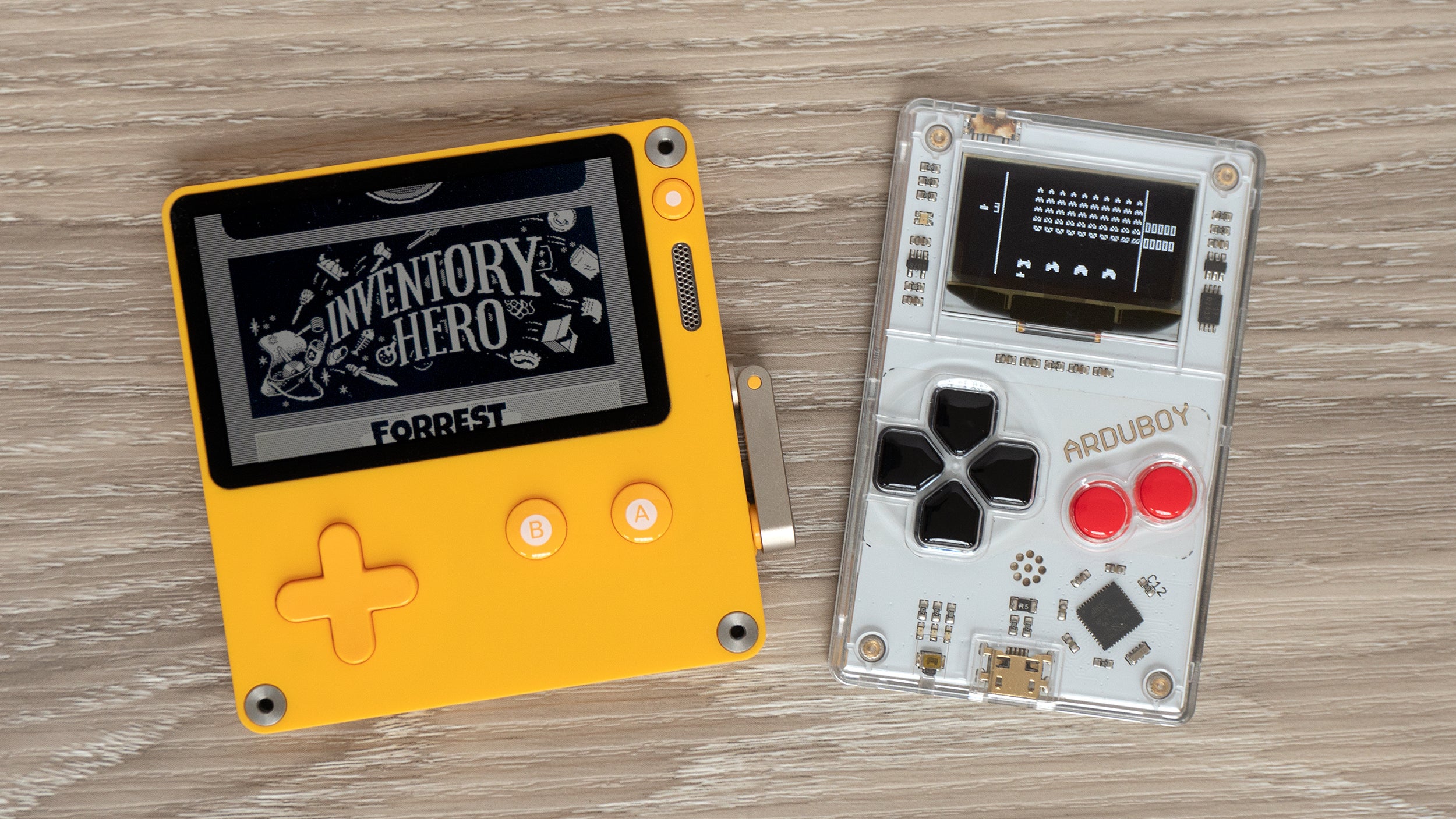
Like the console itself, a lot of the games bring a very unique aesthetic, with many coming from noted indie legends like Zach Gage (Ridiculous Fishing) and Bennet Foddy (Getting Over It with Bennet Foddy). As a platform, the Playdate reminds me of Kevin Bates’ Arduboy, which also uses a monochromatic display and encourages indie developers to contribute. But unlike the Arduboy, the Playdate has a bit more horsepower behind it, with a 168 MHz Cortex M7 CPU and 16MB of RAM. That might not sound like much, but I’m genuinely surprised at the fluidity and complexity of the graphics and animations the Playdate is capable of. The handheld may look like a retro Nintendo Game & Watch, but the games feel completely modern.
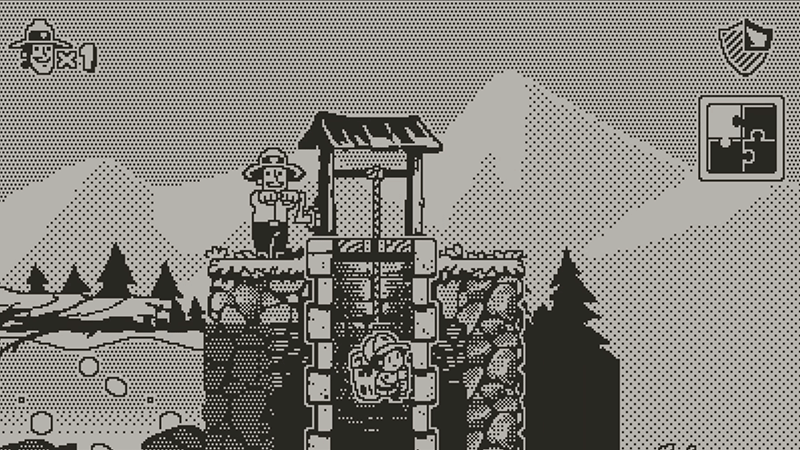
So what is gaming like with the Playdate’s crank? Again, it’s kind of hit and miss. Some games barely use it, while others, like the side-scroller Forrest Byrnes: Up in Smoke, use it for only specific occasional tasks. Take rescuing people from a well by quickly winding up a bucket, for example.
There’s a good reason that Panic has prominently featured Keita Takahashi’s (of Katamari Damacy fame) Crankin’s Time Travel Adventure when promoting the Playdate, because Takahashi really understood the assignment.
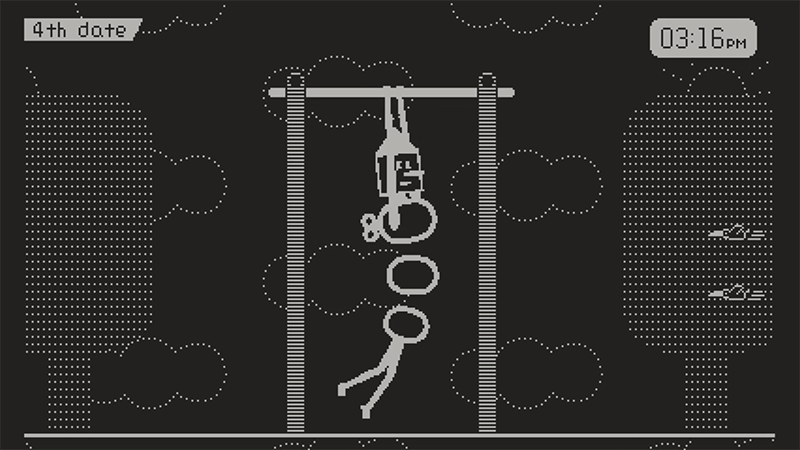
The game has players using the crank to control time as its robot protagonist rushes to meet up with another robot for a date, avoiding obstacles that exist outside the flow of time by replaying events like the robot bending over to smell a flower. The Playdate’s crank is the perfect interface for the game, which is surprisingly fun and much harder than it looks, as the challenges hindering subsequent dates get harder and harder. It’s a game that feels like it can only exist on the Playdate, and almost justifies the cost of the device by itself — almost.
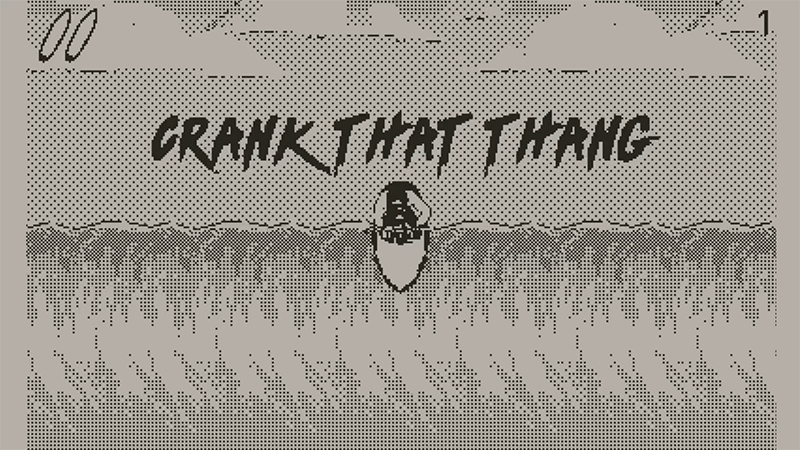
Whitewater Wipeout is another game that uses the crank very well, but as a way to steer a surfer riding a huge wave while performing tricks as they launch off the wave’s crest. It’s extremely challenging and it may take your brain a few tries to wrap itself around the crank-driven interface, but it’s a lot of fun when you master it, and is another great example of how the Playdate’s crank is more than a gimmick.
Are the 24 games available at launch enough to make the Playdate a hit? I’m not entirely convinced, but they do a great job of showing the potential of the new platform, and I’m genuinely excited to see what games the larger community comes up with.
That Heartbreaking Screen
I’m all for companies trying new things, and I genuinely think the Playdate’s crank is a fun innovation, but the handheld is completely let down by Panic’s decision to go with the same kind of monochromatic Sharp Memory LCD that gave the Pebble smartwatch its fantastic battery life. In theory, the screen offers similar long battery life to what you’ll find with electronic paper, but with the excellent refresh rates that are needed for gaming. It’s a shame that the execution here has two major issues.
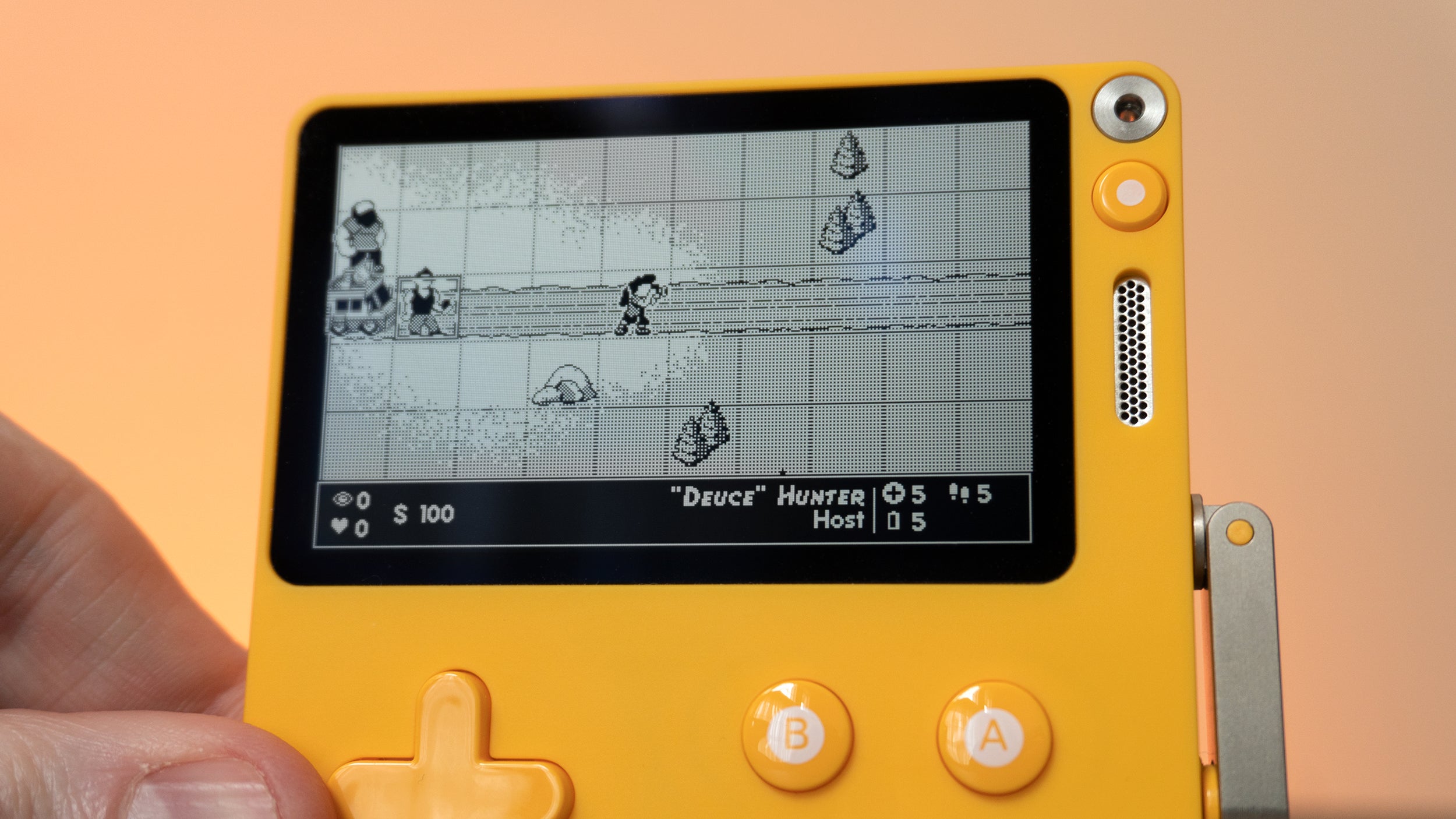
The screen’s 400 x 240 pixels resolution lends itself to some surprisingly detailed graphics (even if they’re all jagged and aliased) but I’ve also noticed that the screen’s small size can often make it hard to discern fine details, particularly when very small text is being displayed. I don’t wear glasses (yet), but I often found myself having to hold the device closer to my eyes at times to read a tiny message or figure out what an in-game object was supposed to be.
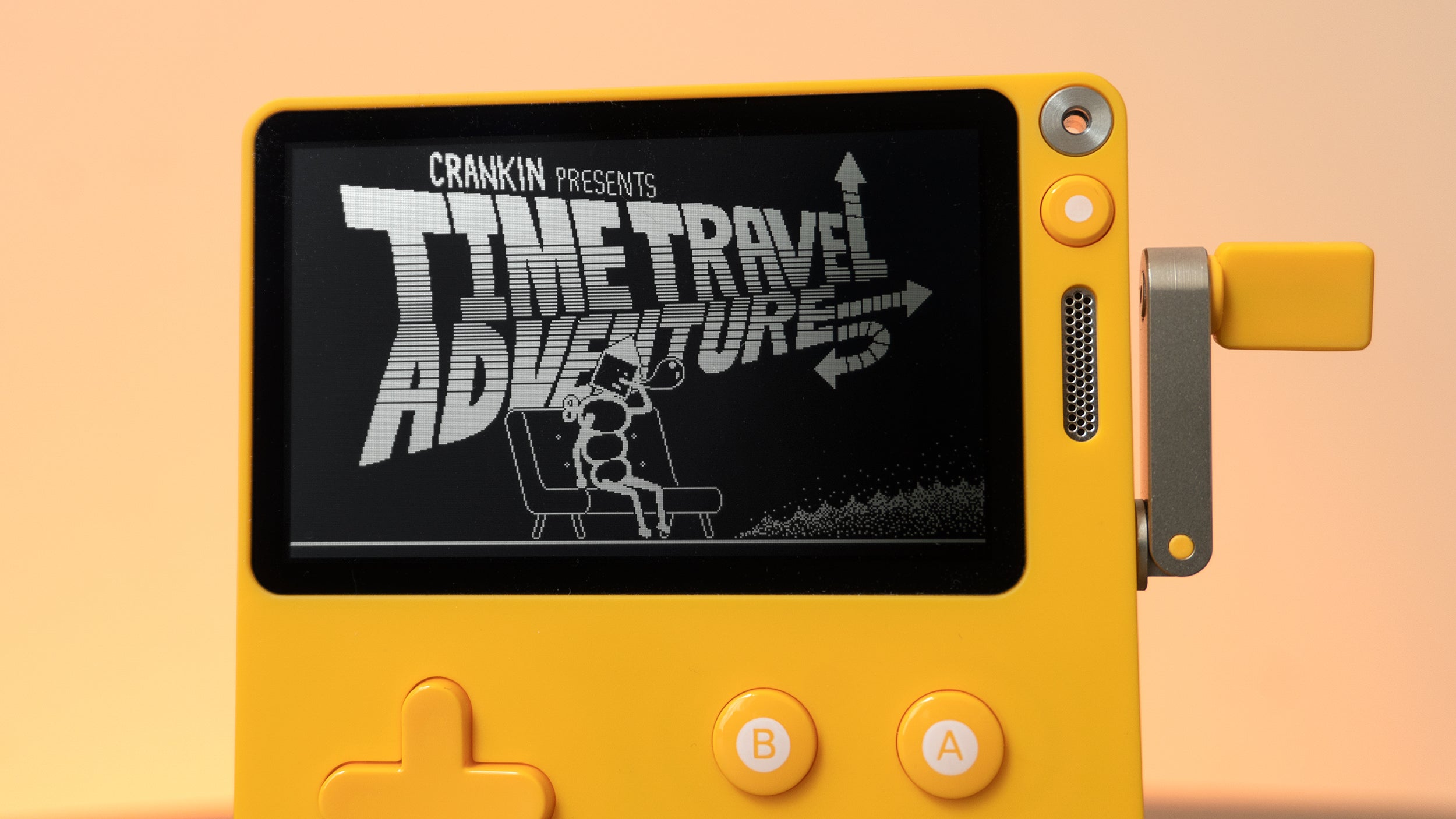
But the bigger issue is that the Playdate’s screen is completely dependent on an ample source of light to actually see it, because it’s got no illumination of its own. It’s perfectly fine if you’re sitting on a bench in the park with the bright sun overhead, but anywhere else, you’re going to find yourself constantly struggling to catch enough light to adequately see the entire screen, while trying to dodge glaring reflections.
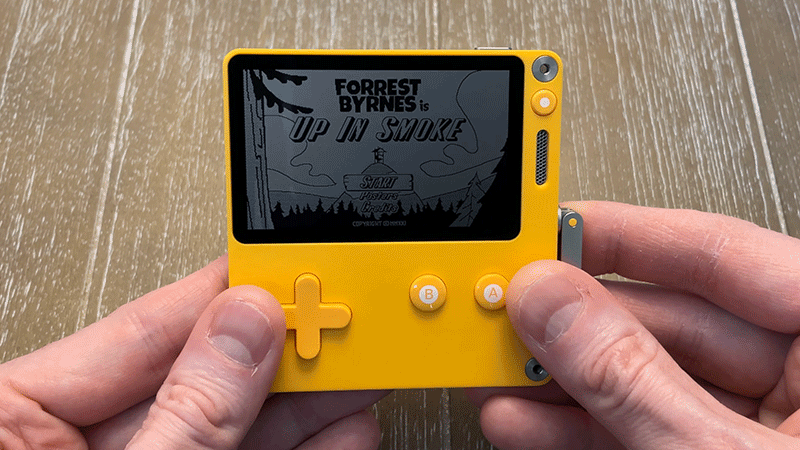
Testing games before bed every night was impossible with just the reading lamp on my side table — I actually had to reach for my hiking head lamp instead — and the viewing angle issues are further exasperated for some games, as the handheld tends to move around in your hands while turning the crank, shifting the screen in and out of adequate visibility in the process.
Given the level of polish on the rest of the Playdate, its user interface, and the first collection of games, I’m genuinely surprised that the problematic screen made the cut.
Is it Worth Making Room in Your Heart for Another Game Platform?
Even with 24 included games at launch and more to come, the Playdate’s $US179 ($248) price tag is a tough sell when, for just $US20 ($28) more, gamers can grab a Switch Lite that has access to a huge library appealing to all gamers. With many of its games taking just a few hours to finish, Panic is instead targeting casual gamers, or those looking for unique offerings that genuinely bring something new to gaming — and I think the Playdate does accomplish that.
The first batch of Playdate games do a great job of demonstrating the system’s potential, and that for me is the biggest appeal of the handheld. The Arduboy spawned a huge community of developers churning out games for the relatively simplistic system, and I think we’ll see even better titles created for the Playdate as its community grows. But I understand that buying a pricey electronic device for what it could be one day is also a tough sell. I’m not ready to call the Playdate’s screen a complete dealbreaker, but I wouldn’t fault you for waiting to see if the Playdate 2 includes a backlight.
